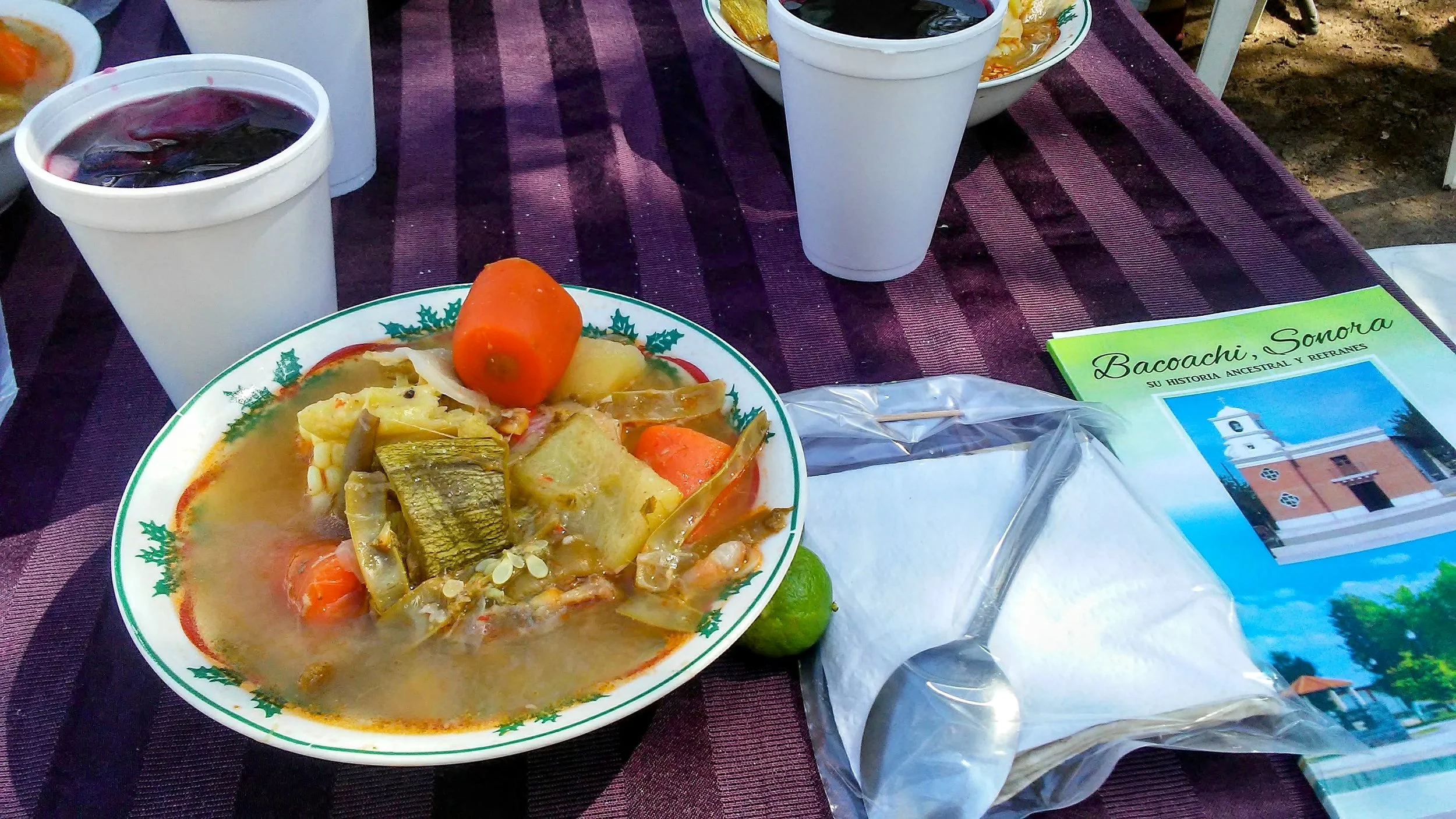🍲The First Sonoran Cocido (Documented)
A delicious cocido and agua de jamaica from traditional cook Lupita Madero in the Rio Sonora Valley.
Sonoran Food History
Philipp Segesser was a Swiss Jesuit missionary who dedicated his life to spreading the Catholic faith and documented his experiences in his writings. Born on July 21, 1695, in Lucerne, Switzerland, Segesser exhibited a strong religious devotion and a calling to serve others.
In 1729, Phillip Segesser received news that he had been accepted for a mission in New Spain. The black robe traveled via Genoa, Cádiz, Santo Domingo, and Havana before finally arriving in Veracruz, Mexico on April 19, 1731. From there, he continued northward, reaching Sonora in early October. Finally, on May 7-8, 1732, he reached his ultimate destination, the Mission San Xavier del Bac in what is now present-day Arizona.
Segesser served in Pimería Alta, a region encompassing parts of present-day northern Mexico and southern Arizona, until his death in 1762. The indigenous peoples of this area, including the Opata and Tohono O'odham tribes, were the primary focus of his missionary efforts.
In the realm of Sonoran food history, he provides us with the first description of a classic of the Sonoran culinary tradition, cocido sonorense which translates literally to “cooked.” Cocido is also the hallmark dish of Madrid, Spain today and it made its way to the Sonoran Desert with the Spanish empire as early as the sixteenth century. The following description of the dish is from 1737:
“The "pot" is a dish that must appear on the table at all meals. It is almost always prepared with a good portion of veal (the Spanish rarely eat beef), cabbage, bacon, garlic, whole onions, chickpeas are never missing, and beans. Everything is cooked together.”
Cocido from La Casona Corella y Molina in Banamichi, Sonora. This version incorporated delicious winter squash and greens.
“La “olla’ es un platillo que debe aparecer sobre la mesa en todas las comidas. Casi siempre se prepara con una buena procion de carne de ternera, (los espanoles rar vez comen cane de vaca), repollo, tocino, ajo, cebollas enteras, el garbanzo que no falta y frijoles. Todo cocido junto. “
If you are a fan of Southwestern history, it is likely you have heard the name Segesser before. The Segesser Hides refer to a set of two painted animal hides that were sent by Phillip Segesser to his family in Switzerland. Just how he came across these colorful buffalo hide paintings is still a mystery.
The hides depict important battle scenes between Indigenous groups and the French and Spanish in the Great Plains region. This incredible piece of documentary history was returned to New Mexico where it is one of the masterpieces on view to the public at the Palace of the Governors New Mexico History Museum in Santa Fe.
Did you make it all the way to the end of this article? Then you are a serious foodie and your only prescription is to join us on the Hermosillo Culinary Tour.
Source:
Hopkins Durazo, Armando. Ed. La relación de Philipp Segesser. Correspondencia familiar de un misionero en Sonora en el año de 1737. Hermosillo, Sonora: Privately printed, 1991.
~~~~~~~~~~~~~~~~~~~~
Like this article and learning about the cultural heritage of the borderlands?
Sign up for our free digital magazine for more and receive our 5 Things You Need to Know Before Visiting Mexico Checklist.
Find value in our public history work?







